▼ State of Goa to go cashless! [11-30-16]
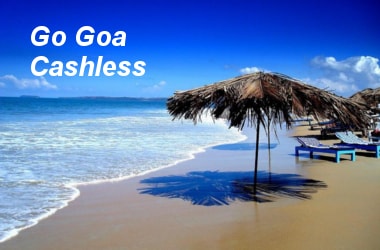 Around the confusion created by demonetisation, the Indian state of Goa is the first state to operate cashless in the country from 31st Dec 2016. Around the confusion created by demonetisation, the Indian state of Goa is the first state to operate cashless in the country from 31st Dec 2016.
The announcement was made by Defence Minister Manohar Parrikar who is the former CM of the state.
The plan includes making small vendors sell perishable goods as per mobile payment.
Vendors will be given Mobile Money Identifier codes when they register at a bank.
Customers will be able to make the transactions by dialling 99# and following instructions that appear on the screen.
The smartphone can be used to make the payment.
There is no limit on the cashless transfer of money and these transactions will be immune from any sort of fees.
Goa Goes Cashless
Goa has benefits due to its small size.
- Population: 15 lakh
- It has 17 lakh registered mobile connections.
- It has 22 lakh bank accounts.
- Most Goans use debit or credit cards
|
▼ IDS payments to be accepted till 2017 without asking source [11-29-16]
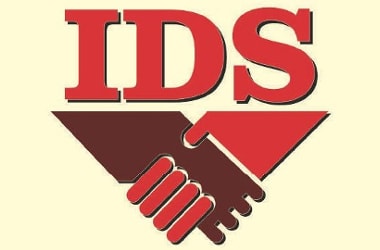 With the last date for paying first instalment of due taxes and penalties under one time black money window IDS nearing, banks have been asked to not look for source. With the last date for paying first instalment of due taxes and penalties under one time black money window IDS nearing, banks have been asked to not look for source.
This is to ensure that payments are accepted without any hassle.
The directive comes after a recent CBDT communication to RBI which cited a CBDT communication to RBI saying a declarant had complained about the bank branch refusing to accept tax and penalty as part of IDS.
Scheme stipulates that minimum of 25 percent of tax, surcharge and penalty must be paid by Nov 30, 2016.
The CBDT has also appended the scheme of the IDS which stipulates that a minimum amount of 25 per cent of the tax, surcharge and penalty is to be paid by November 30, 2016.
A further amount of 25 per cent of the tax, surcharge and penalty to be paid by March, 31 next year;
Balance amount to be paid on or before September 30, 2017.
About Income Declaration Scheme/IDS
- IDS is four months in duration
- It was a one-time window beginning in June 2016
- It gave black money holders a chance to come clean by declaring their stash and paying 45 percent tax and penalty
- 64,275 declarants disclosed an amount of INR 65,250 under IDS
- This will yield INR 30,000 crore to the government
|
▼ RBI asks banks to maintain incremental CRR of 100% [11-29-16]
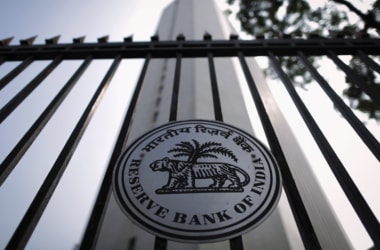 RBI has asked banks to temporarily maintain additional average daily balance to drain out surplus liquidity with them. RBI has asked banks to temporarily maintain additional average daily balance to drain out surplus liquidity with them.
This follows the banking system being flooded with liquidity triggered by heavy inflow of deposits, due to ongoing demonetisation exercise.
CRR or slice of deposits that banks have to maintain with the central bank remains at 4 percent of the deposits.
Surfeit of liquidity is on account of the fact that they altogether parked INR 2,27,242 crore in 3 reverse repo auction conducted by the RBI on Nov 26, 2016.
In a circular to banks, RBI said increase in deposits between Sept 16 and Nov 11, scheduled banks will have to maintain incremental CRR of 100 percent beginning Nov 26.
This measure will absorb a part of the surplus liquidity arising from the return of INR 500 and 1000 bank notes, while leaving adequate liquidity with banks to meet credit needs of numerous sectors.
RBI has observed that with the demonetisation decision, there has been an increase in deposits relative to expansion in bank credit leading to large excess liquidity in the system.
It assessed the magnitude of surplus liquidity with the banking system is expected to rise further in coming weeks.
This surplus liquidity will be partly absorbed by applying incremental CRR.
What is Reverse Repo Window?
Reverse repo is a facility provided by the regulator to deposit excess funds by banks for which they earn interest.
|
▼ Duty on import of certain steel products [11-28-16]
 To protect domestic manufacturers from cheap imports, the Centre on 24th Nov 2016 slapped safeguard duty on import of certain steel products. To protect domestic manufacturers from cheap imports, the Centre on 24th Nov 2016 slapped safeguard duty on import of certain steel products.
Steel products on which safeguard duty was slapped included hot rolled flat sheets and plates (Excluding hot rolled flat products in coil form) of alloy or non-alloy steel.
As per the Revenue Department notification, the effective duty rate will be calculated after deduction of the value of goods.
Anti dumping duty will become payable when import price is below USD 504 per tonne on CIF basis.
CIF means Cost Insurance Freight basis.
Notification has said the duty arrived will be 10 percent and gradually lower to 8 percent in 2018 and 6 in 2019.
10 percent ad-valorem minus anti dumping duty payable will be imposed on imports up to 22nd Nov 2017.
The same will be lowered to 8 percent between 23rd Nov 2017 and 22nd Nov 2018. It will be reduced to 6 percent between 23rd November 2018 and 22nd May 2019
The safeguard duty on import of cheap steel was slapped after steel makers approached the DG of anti dumping and allied duties.
The DG was requested to come up with safeguard measures against imports of cheap steel. Steel makers who approached the DG include JSW, SAIL and Essar.
About Safeguard Duty
- Safeguard duty is imposed on products imported into the country in increased quantities, injuring the domestic industry
- Ad Valorem tax is a tax whose amount is based on value of transaction or property- tax is imposed at the time of transaction in the form of sales or VAT tax.
- Earlier in Nov 2016, government imposed anti-dumping duty on few cold rolled flat steel products from 4 nations including China and South Korea.
|
▼ Indian m wallet market to expand by CAGR of 141 percent: ASSOCHAM [11-25-16]
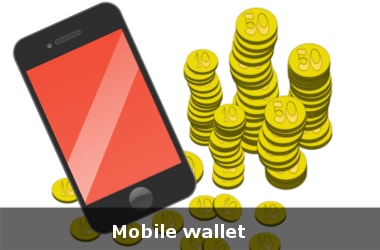 The Indian m-wallet market is expected to grow at a compounded annual growth rate (CAGR) of 141% to reach Rs 30,000 crore by the end of 2021-22, a study by ASSOCHAM and RNCOS indicated. The Indian m-wallet market is expected to grow at a compounded annual growth rate (CAGR) of 141% to reach Rs 30,000 crore by the end of 2021-22, a study by ASSOCHAM and RNCOS indicated.
The growth, during 2015-16 to 2021-22, would be driven by growing usage of smartphones, robust mobile internet penetration, growth of e-commerce sector together with increasing disposable incomes.
The Indian m-wallet market in 2015-16 was around Rs 154 crore. It is also anticipated that the market value of m-wallet transactions in India will grow at a CAGR of 154% during FY16 to FY22, and reach Rs 55 lakh crore from Rs 20,600 crore.
The study was titled 'Indian m-wallet market: Forecast 2022'.
While mobile wallet service contributed to 21% share in mobile payment volume transactions in FY16, its share is expected to increase to 79% by FY22, the study said.
|
▼ India’s longest expressway, Agra-Lucknow expressway launched [11-22-16]
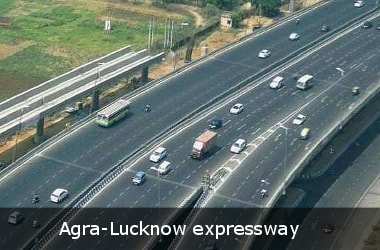 Agra-Lucknow expressway, India’s longest expressway till date was inaugurated on Nov 20. Agra-Lucknow expressway, India’s longest expressway till date was inaugurated on Nov 20.
- The 302 km long six greenfield expressway is special on multiple counts from record time under which it has been completed to the fact that it will reduce travel time between the two UP cities
- The expressway will cut down travel time between Agra and Lucknow to just 3.5 hours from the current 7 hours
- The Agra-Lucknow expressway has a design speed of up to 120 km/hour
- The six lane expressway is expanded to 8 lanes- this includes 4 rail over bridges, 13 major bridges, 57 minor bridges, 148 pedestrian underpasses, 74 vehicular underpasses and 9 flyovers.
- The total expressway is planned to be lined with a metal beam crash barrier on both sides and wire fencing state-of-the-art advance traffic management system for safe and secure transit
- The expressway has been built in a record time of 23 months by the UPEIDA/ Uttar Pradesh Expressways Industrial Development Authority
- The Agra-Lucknow expressway boasts of development centres, agricultural madness, schools, rest houses, petrol pumps, service centres and public amenities among other prominent features
- The expressway spans 10 districts, 236 villages and 3500 ha of land
- It will start in the village of Etmadpur Madra near Agra and end in Sarosa Bharosa near Mohan Road, Lucknow
- The Agra- Lucknow expressway will also be connected to the famous Yamuna expressway through the Agra ring road, boosting connectivity to Delhi and NCR areas such as Noida
- Objective of the expressway is to ensure development of closely areas, providing a fast moving corridor that permits seamless travel, reduces the carbon footprint of vehicles and helps farmers to reach their products to larger cities and attract investors in the state
- As per UPEIDA, a green belt is being developed on the sides of the Agra Lucknow expressway by planting trees on either sides and in the median
|
▼ Chhattisgarh - First state to adopt demonetisation resolution. [11-18-16]
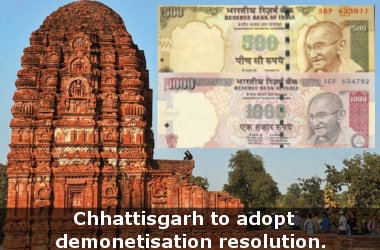 Chhattisgarh became the first state of India to adopt a resolution welcoming demonetisation scheme of the Union government Chhattisgarh became the first state of India to adopt a resolution welcoming demonetisation scheme of the Union government
- The resolution was moved in the state assembly by CM Raman Singh
- Resolution passed on 16th November 2016 saw 41 votes in favour and 25 against
- On Nov 8, at 8:00 pm , PM Modi had announced the demonetisation of high value currency notes of India and that INR 1000 and 500 notes will cease to be legal tender from 8-9 Nov midnight
- The decision aims to remove black money from the system
- It will usher in clean transactions and clean up the money system and impact contentious issues plaguing the system
- The Chhattisgarh government has also pledged to take steps to encourage people in small businesses to switch over to e-payment system and places with swipe machines would be exempt from VAT
- The state government has also made arrangements to make online payments to farmers for their paddy procured under the support price system
|
▼ New INR 500 Rupee Note Features [11-15-16]
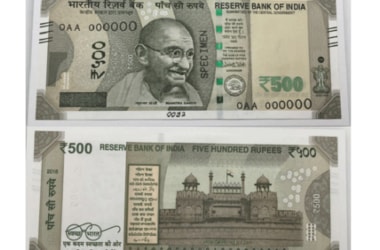 The new high-security INR 500 notes have been released to banks for distribution on 14th Nov The new high-security INR 500 notes have been released to banks for distribution on 14th Nov
- As per the central bank statement, the new INR 500 notes bear the signature of RBI governor Urijit Patel
- The note is stone grey coloured and bears year of printing 2016 and the Swach Bharat logo printed on the reverse
- The new 500 note differs from the earlier in size, theme, colour, location of security features and design elements
- It has The Red Fort as an image of the Indian heritage site with the Indian flag on the reverse of it
- The banknote also has other features enabling visually impaired persons to identify the denomination: Intaglio printing of the Mahatma Gandhi portrait, Ashoka Pillar emblem, bleed lines, circle with 500 in the right and the identification mark
|
▼ PM Narendra Modi to be 'Incredible India' mascot [11-10-16]
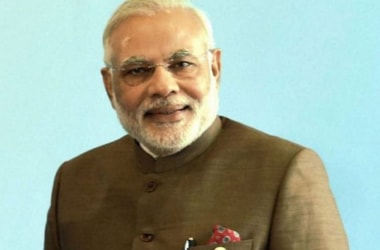 The Union Tourism Ministry is set to name Prime Minister Narendra Modi as the mascot of the Incredible India campaign. The Union Tourism Ministry is set to name Prime Minister Narendra Modi as the mascot of the Incredible India campaign.
- This position was vacant following Aamir Khan’s removal as the brand ambassador of the campaign in January 2016 for his remarks on Indian Intolerance.
- Bollywood superstars Amitabh Bachchan and Priyanka Chopra were also said to have been considered for the role.
- Video footage of PM Modi speaking on tourism in India and abroad will form part of the campaign.
- Incredible India campaign was conceptualised in 2002 by V Sunit and Amitabh Kant, Joint Secretary, Ministry of Tourism.
- It is the first tourism marketing initiative of its kind.
- The main objective is the creation of a distinctive identity for tourism from India.
- Campaign has established India as a high-end destination for tourists, generating 16 percent increase in tourist traffic in the first year itself.
|
▼ Banks empowered to issue masala bonds! [11-7-16]
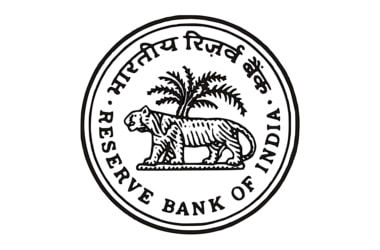 The Reserve Bank of India has permitted banks to issue rupee denominated bonds in the overseas market. The Reserve Bank of India has permitted banks to issue rupee denominated bonds in the overseas market.
- These are also called masala bonds.
- The aim is to shore up the capital base and financing as well as affordable housing infrastructure.
- Banks can raise perpetual debt instruments which can be considered for calculating the bank’s additional tier 1 capital or debt capital instrument that can calculate the bank’s tier 2 capital.
- Bonds will be issued under Basel III norms.
- They will therefore have the loss absorption clause.
- As per the clause, the bank can opt for not honouring coupon payment in the event of financial stress.
- For financing infrastructure, and reasonable housing, banks can issue long term bonds which don’t have the loss absorption clause.
- Central bank first announced the notion of masala bonds on Aug 25, when a slew of measures were announced to develop the bond and currencies market.
- Additional funds generated from the rupee bond route will help develop the market of masala bonds overseas.
|
▼ Centre, States agree on GST formula [11-4-16]
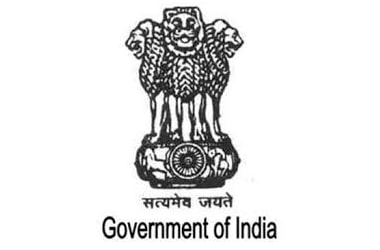 India took a step forwards rolling a unified Goods and Services Tax with the Centre and states agreeing on a 4 slab structure– 5,12,18 and 28 percent–along with a cess on luxury and sin goods such as tobacco. India took a step forwards rolling a unified Goods and Services Tax with the Centre and states agreeing on a 4 slab structure– 5,12,18 and 28 percent–along with a cess on luxury and sin goods such as tobacco.
- The Centre had proposed a 4 tier system- 6,12,18 and 26 percent along with a 4 percent levy on gold.
- The final rate structure had brought down the lowest slab by one percentage point to 5 percent while raising the highest rate by 2 percentage points to 28 percent.
- Around 50 percent of the items in the retail inflation basket primarily food items will be kept out of GST.
- There will be zero tax on such items.
- A lower tax slab of 6 percent is proposed for those essential commodities on which no excise duty is levied at present by the Centre but a 5 percent VAT is levied by the states.
- There will be two standard rates of 12 and 18 percent which will be applicable to many taxable goods.
- Effective tax on most white goods such as refrigerators is between 30 to 31 percent including 12.5 percent central excise duty, state value added tax of 14.5 percent and cascading effect of about 4 percentage points.
- Following GSTm the effective tax rate on most of the goods will come down to 28 percent.
- Additional revenue generated by raising the peak rate from the earlier proposed 28 to 28 percent will be set off against the revenue loss from slashing the lowest rate to 5 percent from 6 percent.
- The number of goods were transferred from the 28 percent to the 18 percent category.
- A decision on tax on gold has been left aside for now.
|
▼ 2 billion dollar clean energy equity fund [11-4-16]
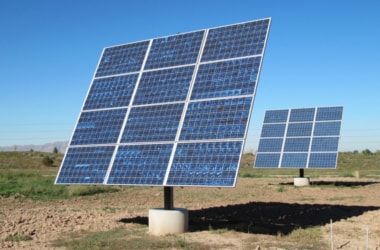 Union Government in Nov 2016 has taken the decision to launch USD 2 billion dollar clean energy equity fund. Union Government in Nov 2016 has taken the decision to launch USD 2 billion dollar clean energy equity fund.
- The fund is being created to support the ambitious target of adding 175 GW renewable energy generation capacity by 2022.
- Government has decided to launch the fund jointly with state power entities namely National Thermal Power Corporation Limited, Rural Electrification Corporation and Power Finance Corporation Limited.
- The New and Renewable Energy Ministry has initiated this project.
- Report also indicated that seed funding will be done by the Union government for this fund.
- The funding will be from the National Investment and Infrastructure Fund.
- Government of India will also collect 4 billion USD per year in the next 3-4 years for the clean energy fund.
- Government of India is also planning a USD 1 billion dollar PE fund for the renewable energy sector.
|
▼ 585 mandis allocated INR 10 lakh each for setting up waste management plans [11-3-16]
As part of the Centre’s cleanliness mission, agricultural ministry has made the decision to set up a fund of INR 10 lakh each for 585 mandis across the nation for waste management plans to treat both biodegradable and non-biodegradable wastes. - Besides, the ministry has also decided to earmark 1 percent fund of the flagship Rashtriya Krishi Vikas Yojana for the cleanliness drive.
- INR 5000 crore was allocated to RKVY in the budget for the current financial year 2016-2017.
- Swachchta or cleanliness action plans have been prepared.
- The money to the marketplaces will be provided under the eNAM scheme.
- The eNam scheme is an electronic trading platform where all 585 marketplaces will be connected in a way to act as a common market for buyers and sellers of farm produce.
- Government has integrated 250 of these mandi in 10 states with eNam in the first phase.
- Numerous technologies making the best use of agricultural waste such as preparation of bio-compost, vermin-composting, whey utilisation, straw enrichment and water recycling of waste, cotton waste management,waste management for fisheries and engineering technologies will be considered as part of the waste disposal plants in mandi across the nation.
|
▼ Real Estate Regulation & Development General Rules 2016 [11-2-16]
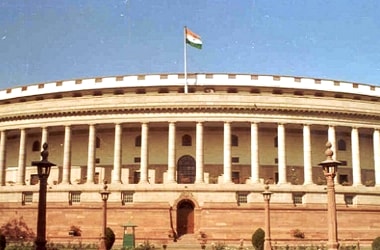 This seeks to regulate the housing sector besides ensuring transparency and timely completion of projects in the UTs. This seeks to regulate the housing sector besides ensuring transparency and timely completion of projects in the UTs.
- Rules notified by the Housing Ministry will be applicable to Andaman and Nicobar islands, Dadra and Nagra Haveli, Daman and Diu, Lakshwadeep and Chandigarh.
- Real Estate Regulation and Development Act 2016 is a major reform measure to regulate the vast real estate sector, requiring the registration of all projects with state level Real Estate Regulatory Authorities to ensure protection of buyers and developers.
- The rules will also be framed for the NCR of Delhi while other states and UTs will come out with their own rules.
|
▼ Andhra, Telangana top ease of doing business! [11-1-16]
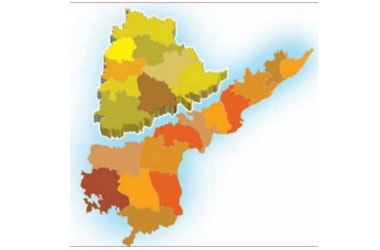 Andhra, Telangana have topped the ease of doing business ranking. They have jointly topped the ease of doing business ranking while Gujarat has slipped to third position in the list prepared by the World Bank and DIPP. Andhra, Telangana have topped the ease of doing business ranking. They have jointly topped the ease of doing business ranking while Gujarat has slipped to third position in the list prepared by the World Bank and DIPP.
- Chattisgarh, MP, and Haryana have occupied fourth, fifth and sixth slots respectively in an index based on degree of implementation of DIPP’s 340 point Business Reform Action Plan.
- The Action Plan includes reforms on 58 regulatory processes, policies, practices or procedures spread across 10 reform areas spanning the lifecycle of a typical business.
- Many single window clearance, tax reforms, labor and environment reforms, dispute resolution and construction permit were the tax reform areas considered.
- In 2015, Gujarat featured at the top with AP at second place and Telangana at 13th.
- As per the latest 2016 index, those in the list of top 10 states in India providing a better climate for business including Jharkhand (7th), Rajasthan (8th), Uttarakhand (9th) and Maharashtra (10th).
- Among leading states, Odisha occupied the 11 slot followed by Punjab, Karnataka, UP, WB, Bihar and HP.
- These rankings were provided in a report titled Assessment of State Implementation of Business Reforms 2016 which was prepared by World Bank in association with the Department of Industrial Policy and Promotion.
- The exercise is aimed at promoting competition among states to improve business climate to attract domestic as well as foreign investments.
- In the World Bank’s latest Doing Business report, India’s place has remained unchanged from previous year’s original ranking of 130 among 190 economies assessed on various parameters.
- Last year’s ranking has been revised to 131 from which the country has improved its place by one spot.
|
▼ Fitment committee for implementation of 7th Pay Commission in Odisha! [11-1-16]
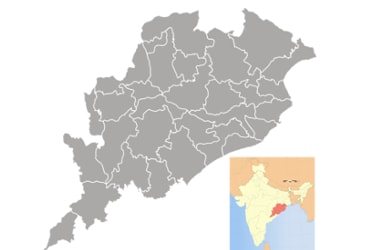 Odisha government has set up a fitment committee for implementation of 7th Pay Commission recommendations for employees and pensioners. Odisha government has set up a fitment committee for implementation of 7th Pay Commission recommendations for employees and pensioners.
- State government will implement the 7th Pay commission recommendations to benefit state government workers and pensioners.
- The 7th Pay Commission is headed by Justice AK Mathur has recommended a 23.55 percent overall hike in pay, allowances, and pensions for central government employees w.e.f January 1, 2016.
- An official estimation has pegged the pay revision requirement at INR 5500 crore per year.
- Currently, the state government has granted INR 29,836 crore per year over salaries and pensions.
|
▼ The World Bank appoints first LGBT issues adviser [11-1-16]
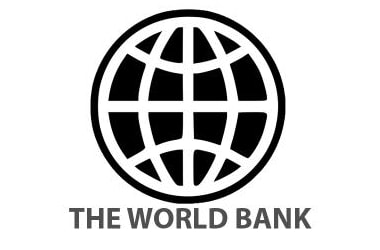 The World Bank has appointed its first adviser tasked with promoting the lesbian, gay, bisexual, transgender and intersex issues in its development work. The World Bank has appointed its first adviser tasked with promoting the lesbian, gay, bisexual, transgender and intersex issues in its development work.
- This newly created senior position is part of the bank’s efforts to solidify commitments for researching and curbing discrimination against LGBTI persons across the 136 nations where it has offices.
- The initiative by the poverty-fighting institution comes at a time when discrimination against LGBTI people is facing increased scrutiny internationally.
- The bank, which makes loans in developing countries and conducts research has named Clifton Cortez to fill the position.
- Following two decades of experience in development, Cortez has managed partnerships for the United Nations program on HIV-AIDS, UNAIDS.
- In recent years, the bank’s research has increasingly turned to economic impact of discrimination on LGBTI persons.
- This year, the Washington DC based organisation has been collecting data on the economic and social status of LGBTI persons worldwide and launch several research projects on LGBTI persons.
- The World Bank’s announcement came after USAID publicised a new rule barring foreign aid contractors from discrimination against LGBTI persons in the service it funds.
- The UN appointed its first independent investigator to help protect the community worldwide from discrimination and violence.
- An UN report in 2015 indicated many LGBTI people have been killed in thousands in recent times and violence included rape, abuse, knife attacks and mutilation.
|
▼ GSTN & DGFT in an agreement for sharing forex realisation data [11-1-16]
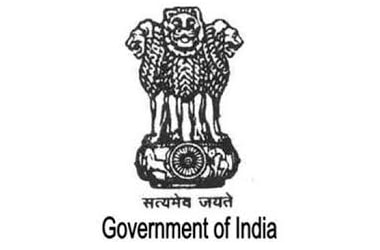 GSTN has inked a pact with DGFT for sharing forex realisation data with the aim to strengthen processing of exports transactions of GST taxpayers. GSTN has inked a pact with DGFT for sharing forex realisation data with the aim to strengthen processing of exports transactions of GST taxpayers.
- The Goods and Services Network has signed an MoU with the commerce ministry for sharing of foreign exchange realisation and import-export code data.
- The move can strengthen processing of export transactions of taxpayers under GST, lower human interface and increase accountability.
- GSTN is a not-for-profit non-government private limited company promoted by the central and state government with specific mandate to create the IT infrastructure and the services required for implementing GST.
- MoU was signed whereby the electronic bank realisation certificate captures transaction level detail of the foreign exchange realisation in India.
- The electronic Bank Realisation Certificate project implemented by DGFT created an integrated platform for receipt, processing and use of all bank realisation related information by banks, central and state government departments and exporters.
- The project enabled banks to upload foreign exchange realisation information subject to exports on the DGFT server under a secured protocol.
|
▼ Guidelines on domestic interest rate futures relaxed by RBI [11-1-16]
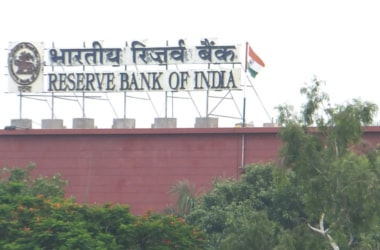 The Reserve Bank of India relaxed guidelines on what the domestic interest rate futures can be offered on 28th Oct, 2016. The Reserve Bank of India relaxed guidelines on what the domestic interest rate futures can be offered on 28th Oct, 2016.
- This permits banks to hedge their short-term interest exposure.
- Till now, the banks could not hedge their interest rate risk on active government bond benchmarks other than 91-day treasury bills.
- Registered exchanges can select the underlying instrument or interest rate of new contracts subject to RBI approval, according to the central bank circular.
|
| Chronology of events |
|
World Bank has promised to take GST and bankruptcy code on board in the next report. It said that India also managed to improve on various sub rankings although the WB report did not show improvement in the country’s ranking.
|
|
The World Bank is set to bring out the ease of living index that will rank cities internationally, the development coming at a time when the India government has launched a mission to help develop 100 smart cities.
|
|
Combined index of 8 core industries stands at 176.1 in September 2016 which is 5 percent higher compared to September 2015 the cumulative growth during April to September 2016-2017 was 4.6 percent.
|
|
Kerala in Nov 2016 declared all 14 districts as drought hit.
|
|
RBI has directed all the banks to dispense more INR 100 rupee banknotes through ATMs.
|
|
ICICI Bank launched the home loan overdraft facility for salaried customers.
|
|
Union Government on Nov 9, 2016 announced cash deposits above INR 2.50 lakh rupees threshold under a 50 day window could attract a tax plus 200 percent penalty in case of income mismatch.
|